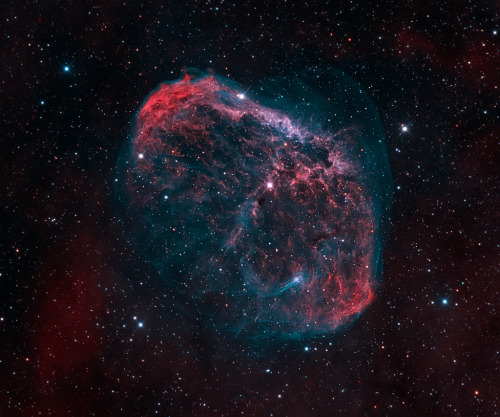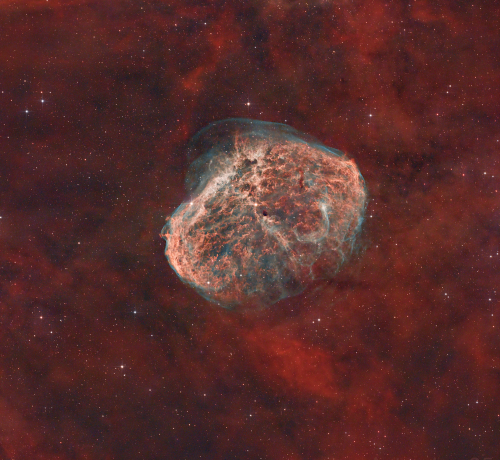Crescent Nebula - Blog Posts
feel kinda guilty but i cant wait til this one burns out. think of the freaking supernova im

NGC 6888 // Crescent Nebula, with central Wolf-Rayet Star WR 136

Object Names: NGC 6888, The Crecent Nebula
Image Type: Astronomical
Credit: NASA
Time And Space

I took another photo of the crescent nebula (C27) this time using my monochrome camera and processed similarly to my photos of the veil nebula. The H-alpha photos really helped to enhance the ionised hydrogen present in this region of space (deep red clouds in the background). Still not completely satisfied with how the stars turned out (too much halo visible around them), could have been mitigated if the clouds had not come half way through the imaging session or if I do another night of imaging of this target.

This is the Crescent nebula it is located in the constellation Cygnus. This nebula is the result of the center star first becoming a red supergiant and ejecting some of its outer layers of gas in space, that gas cloud was then shaped into a bubble by the stellar winds emitted by the central star when it later turned into a Wolf–Rayet star.
The resulting gas bubble is heated and ionised by both the UV rays edited by the start and the stellar winds causing it to glow. Wolf-Rayet stars are the final step of some of the most massive stars before they explode into supernovas. In the case of the crescent nebula, the central star is expected to go supernova within the next few hundred thousand years (We probably still have quite a bit of time left before we observe that).

When a star goes supernova, some of the matter that composed the star is blasted off into space at extremely high velocities (up to 10% of the speed of light). This matter will then slowly (few hundred to a few tens of thousand of years) slow-down and cool-down to for me vast clouds of interstellar dust and gas. This second photo is a part of such a gas cloud, the veil nebula (the center of the western veil, also known as C34). In short, this is the photo of what's left of the corpse of a star that exploded about 10 to 20 thousand years ago.
